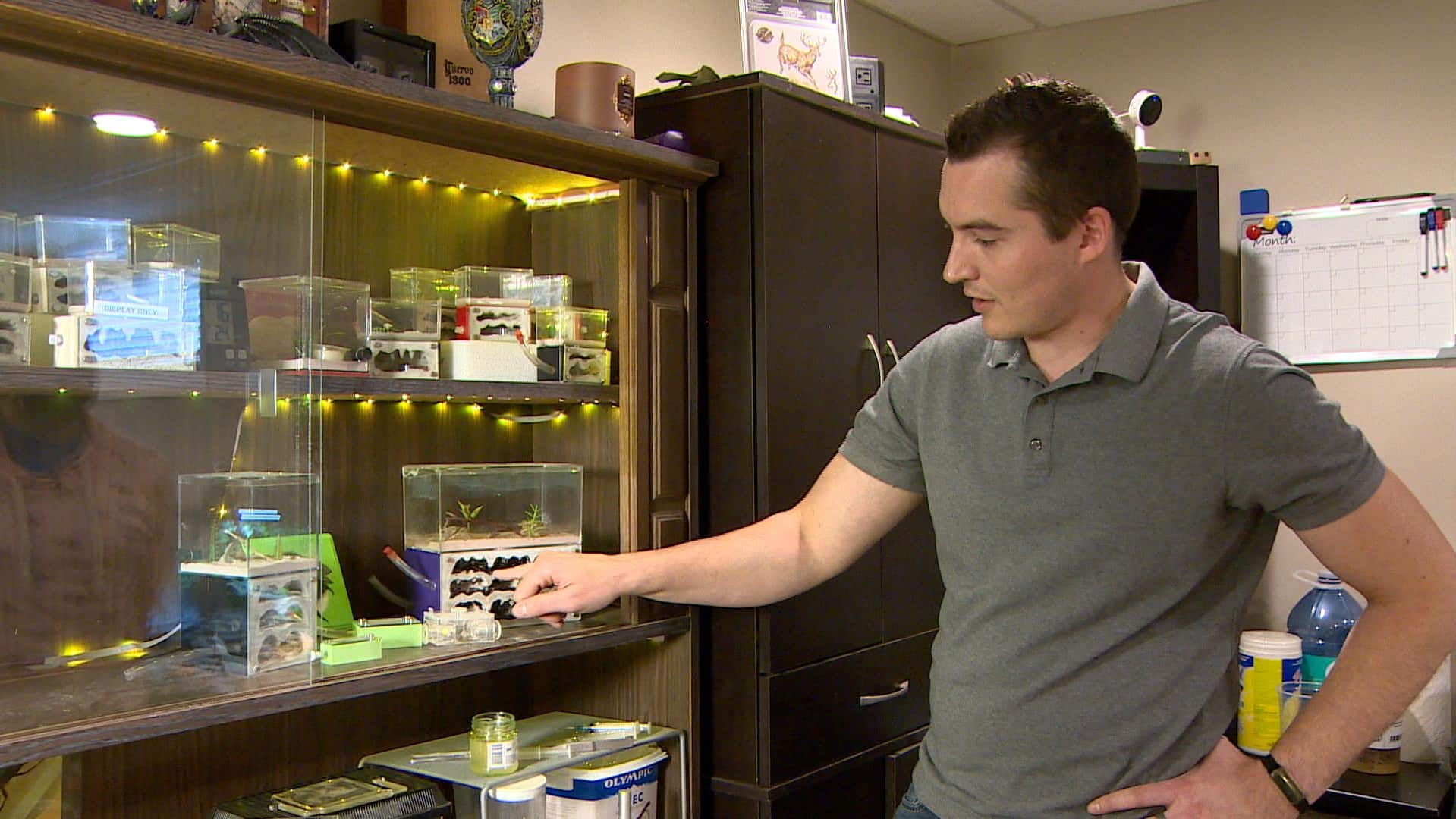
When the ants go marching one by one in Edmonton, insect enthusiasts go out and catch them to keep as pets.
With its river valley, Edmonton has a lot of good habitat for ants, says Zachary Liu, a second-year biology student at McGill University in Montreal, and owner of a business called Canada Ant Colony.
The company sells ants across the country to research institutes, film crews and prospective pet owners.
Edmonton is where Liu gets a large chunk of his ants, from local collectors like Scot Ellacott.
“I kind of broke the ice when I came out publicly with my ant-keeping hobby,” said Ellacott, who keeps up to 30 ant colonies in the basement of his home.
“Toronto was the booming place for ant keeping and just within the last three or four years its really picked up in the West, with Edmonton kind of being a hub,” he said.
While many people go out of their way to avoid ants, Scot Ellacott spends his spare time seeking them out and even keeps more than 20 ant colonies in his basement.
Most ant collectors focus on catching the queen, which tend to be the largest ant in the colony and the sole egg layer.
“She is the life of the colony. Without a queen, there is no colony,” said Ellacott.
He said a good time to catch ants is during a nuptial flight, when queens set out to begin a new colony.
Although timing of nuptial flights varies by ant species, in Alberta they tend to be between May and September.
Ants have a highly evolved social systems, with queens, males, and workers. Although the workers are female, they can’t reproduce. Ants are known to take slaves, conduct violent raids and go to war against other colonies.
“Ants seem to problem-solve. They don’t just exist, but if they want to get somewhere, they will find a way to make it happen,” said Warren Paterson, another Edmonton ant keeper.
Paterson gave a colony to his 12-year-old daughter, later taking up the hobby himself so the two could share a common interest.
“I like trying to buy gifts that are long-term and useful and the interest stays for a long time,” he said.
Some queen ants can live more than 30 years.
An understudied insect
For years, there was a misconception that Alberta had few ant species, said James Glasier, an ecologist at the Calgary Zoo who studies ants.
In the last 20 years, scientists have found more than 80 different species of native ants in the province, bringing the total to 120.
Of those, about 40 different species are in the Edmonton and Calgary areas, said Glasier.
“The problem with ants is there hasn’t been a long history of studying their populations in Alberta. We don’t actually know too much about about them,” he said.
Radio Active9:39We go looking for ants
Meet the people who keep the six-legged insects as pets.
Ant enthusiasts are helping fill that knowledge gap by providing scientists with information on how to better keep and feed ants in captivity, so they can be studied.
“Just like any group that spends time with an organism or out on the land, they will know more than a researcher who may not spend as much time within that realm of knowledge,” said Glasier.
Outside the national and provincial parks, there are few rules on collecting ants in Alberta. But that could change if the hobby continues to grow in popularity, said Ellacott.
Risk for disease
While collecting and keeping ants is a great way to learn about the natural world, Glasier said he has concerns when people buy ants over the internet. If they’re not careful, they could enable the spread of disease or introduce invasive species.
“Maybe they don’t know how to look after them and they do something like what people do with goldfish and they release the ants out into the wild,” he said. “I feel like that’s the the danger of it.”
Invasive species of concern include the European fire ant, known for its painful stings. The species was introduced to North America in the first half of the 20th century, likely through infested containers of plants shipped to Maine.
To help stop the spread of invasive species, Liu said his company only sells native ants or species with government approval. He also tells his customers to not release ants into the natural environment.
The company has an unconditional buy-back program in case the insect becomes unmanageable for any keeper.
Regardless, Liu said, the hobby is becoming more and more mainstream.
“It’s a much more interesting hobby than, say, 30 years ago, and our goal is to make it as accessible as possible.”
